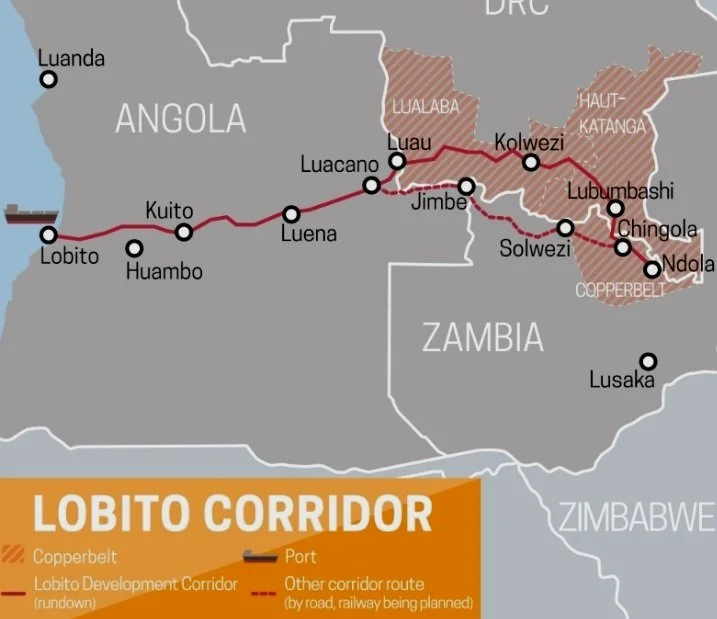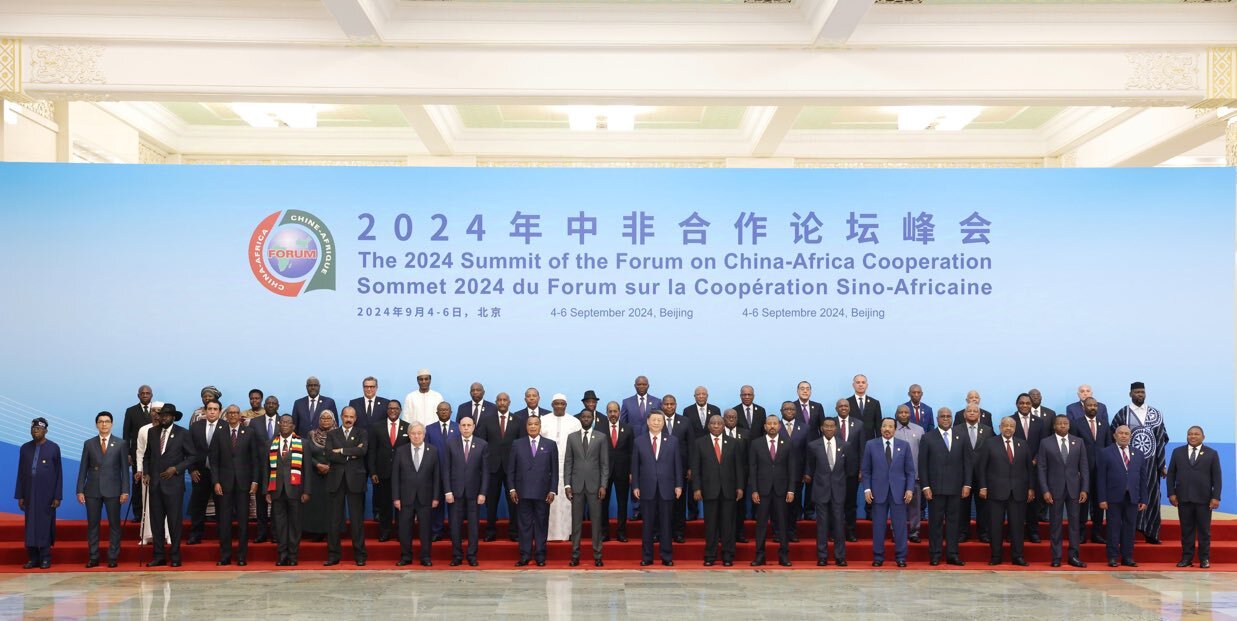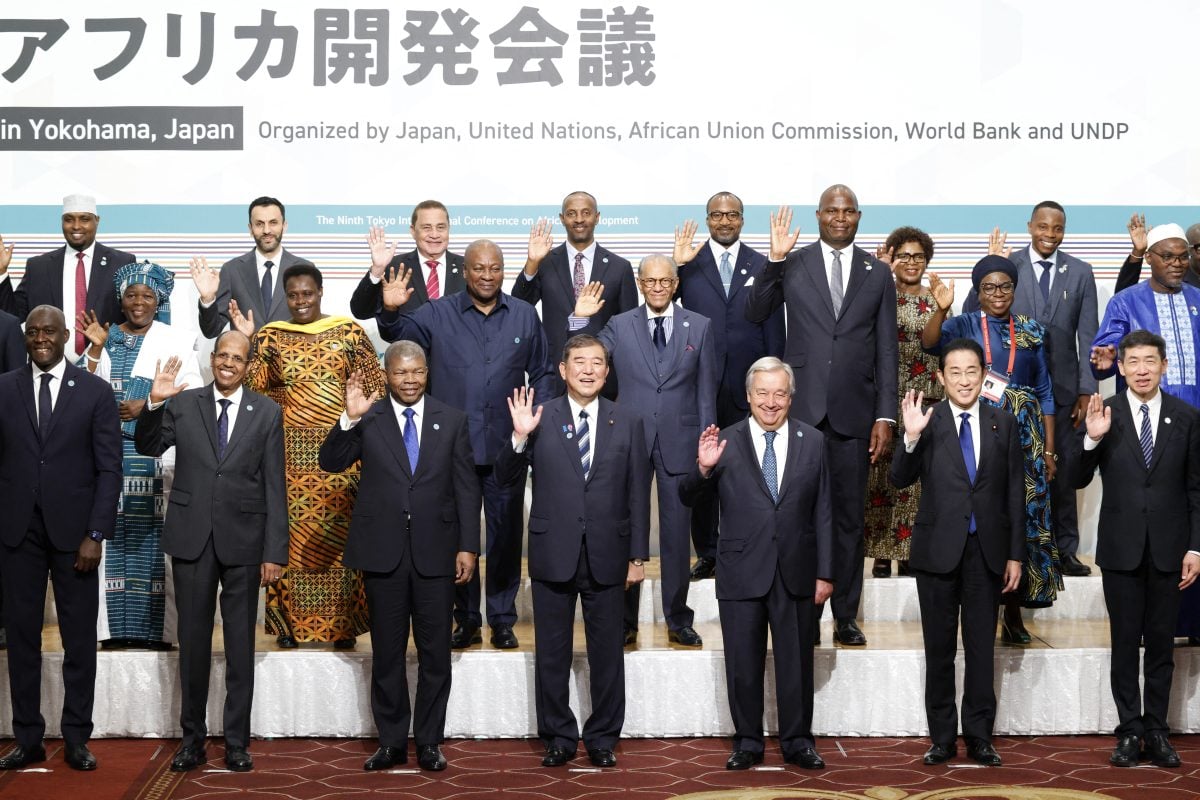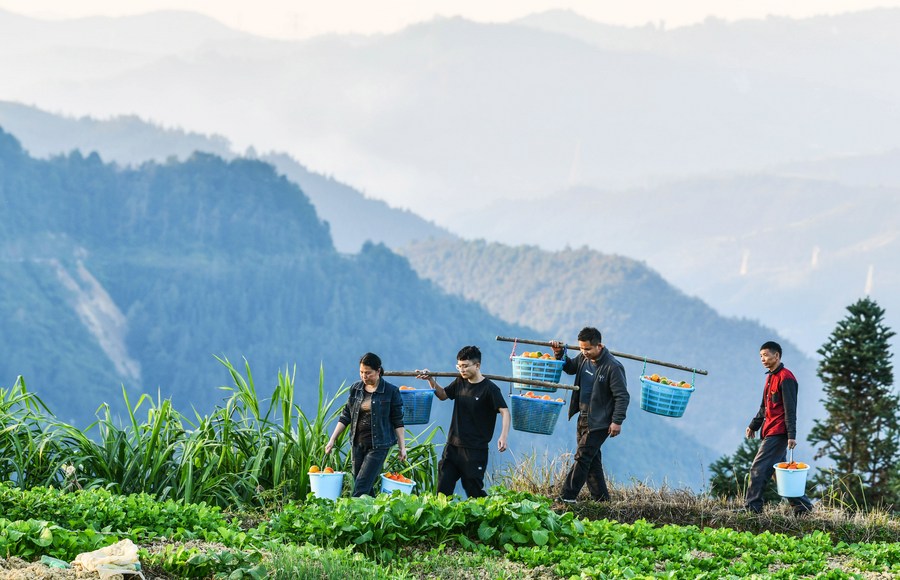The Lobito Corridor is a rail and infrastructure project spanning 1,300 km from the port of Lobito in Angola to the mining regions in the Democratic Republic of the Congo (DRC) and Zambia. It was originally developed in 1902 as the Benguela Railway, and its construction was completed in 1931. It was primarily engineered to connect extensive mining interests from the inner African territories of what is now Zambia and the DRC to the Atlantic Ocean, allowing for the export of resources to Europe and the Americas. In contemporary times, trade, industrialisation, and the regional integration of Southern Africa are the main objectives served by the corridor. The project diversifies trade links as well as creates opportunities for developmental projects.
It is also the flagship initiative of the Group of 7 (G7)’s collaborative effort to fund infrastructure projects in developing countries under the Partnership for Global Infrastructure and Investment (PGII or PGI). This frames the Lobito corridor as a counterweight to China’s Belt and Road Initiative (BRI). However, when one observes the project’s history, it is easy to see that it is “a purely commercial entity with zero geopolitical considerations,” as Nicholas Fournier, the CEO of the Lobito Atlantic Railway, said recently.
At the centre of the corridor is the exportation of critical minerals. The development dividends hoped to be benefited by African countries include: investments in roads, energy, and digital infrastructure. The project is backed by multilateral investments worth up to $10 billion, aimed at bridging Africa’s infrastructure gaps.
In Angola, the key minerals extracted include diamonds, rare earth elements (REEs), copper, cobalt, and lithium. The DRC holds 70% of the world’s cobalt reserves and ranks as the world’s second-largest copper producer. It also has lithium, tin, tantalum, and tungsten. Zambia boasts Africa’s second-largest copper deposits, after the Democratic Republic of the Congo, and it also holds significant reserves of cobalt, nickel, and manganese.
As a country with a long-standing presence in Africa’s economic affairs, China has a strategic interest in the Lobito Corridor. The mining and infrastructure sectors, specifically those relevant to the Lobito corridor, are also deeply intertwined with China’s development projects in Africa.
In 2006, the China Railway 20th Bureau Group Corporation (CR20), a subsidiary of the China Railway Construction Corporation (CRCC), initiated extensive renovations on the railway, which continued until 2014. The China Eximbank funded the construction with a loan of up to $2 billion to the Angolan government. In China’s revitalisation of the corridor, it created over 25,000 local jobs and trained more than 5,000 Angolan technicians. The rail network now handles 67 stations following the upgrade designs, with trains travelling at speeds of up to 90 km/hr. It also has the capacity to carry 20 million tons of cargo and four million passengers.
Therefore, besides the primary and local players, including Angola, the DRC, Zambia, and Tanzania (which is considered in the planned extension of the corridor to the Indian Ocean via the TAZARA railway), China is a major actor in the re-establishment of the Lobito Corridor. Whereas Western players present the Lobito Corridor as an alternative to the eastward routes, such as TAZARA, the future of the corridor lies in connecting it to the TAZARA railway line, not excluding it.
The TAZARA Railway was built in the 1970s with an interest-free loan from Mao Zedong’s China. It was at the time a symbol of African independence and Sino-African cooperation, as it helped landlocked Zambia export its copper and other resources through Tanzania’s port of Dar es Salaam, bypassing the apartheid-era Southern Rhodesia (now Zimbabwe) and South Africa.
Given that China already dominates the mining sector in the region, it cannot be sidelined from the development of the Lobito Corridor. Chinese companies own 80% of the DRC’s copper mines and are also responsible for digging up 85% of the DRC’s rare earth minerals, which are essential in EV battery manufacturing. As such, the Lobito corridor can only be commercially viable if it depends on Chinese mining companies exporting minerals from the DRC and Zambia.
For the African countries, there are fundamental issues to handle regarding the Lobito Corridor. Whereas the corridor is designed to connect mineral-rich regions to the Atlantic Ocean for ease of access to global markets, the export of raw minerals is deleterious to the long-term development of African countries. Industrial growth can only occur if there is value added to the minerals mined. Therefore, whereas it is good to develop the Lobito Corridor, there must be negotiations by Angola, DRC, Zambia and other countries to ensure that there is no perpetual exportation of raw materials, as that would mean exporting jobs, higher value of the minerals, and the development of industrial techniques would be denied our people.
The writer is a senior research fellow at the Development Watch Centre.









